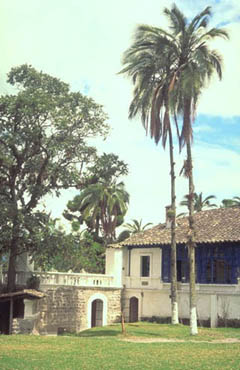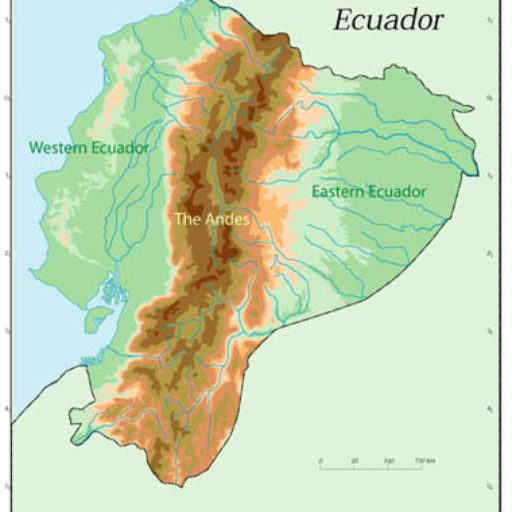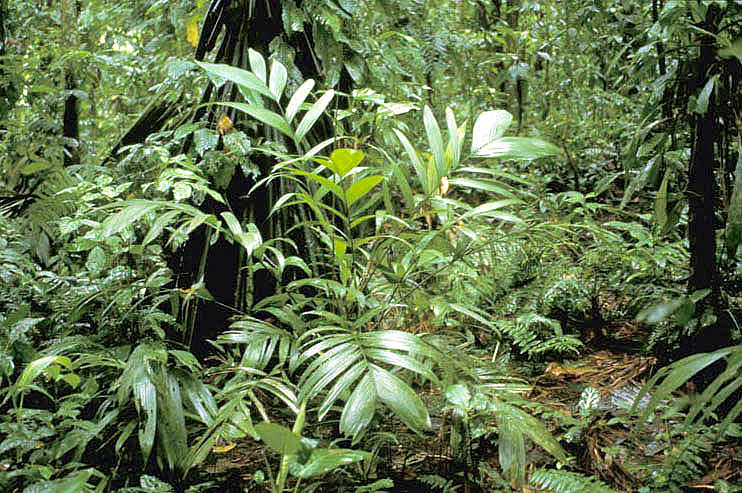Solitary palm tree, male individual. Stem 180 cm. tall (other palms in the area with stems to 4.90 m. tall), with persistent leafbases on the uppermost 120 cm. Diameter below the persistent leafbases: 27 cm. No. of leaves 11 (some had been cut during harvest of fibers from the leafbases, up to 36 leaves were recorded on an other individual in the area). Petiole and leafsheat: 183 cm long. The petiole and leafsheats are splitting up along the margins, forming to 15o cm long fibers. Rachis 495 cm. Pinnae inserted regularly and opposite (In some areas alternating). No. of pinnae: 2 x 96. Largest pinnae (inserted on the middle of the leaf): 120 x 7 cm. The pinnae are in a horizontal plan at the base, turning to a vertical position towards the apex of each leaf. Leaves more or less erect. Inflorescence: One male inflorescence inserted 150 cm above the ground. Peduncle: creamy-white to yellow, fleshy, 53 cm long, ovate in crosssection, 5.2 x 3.9 cm below lowermost rachillae. Prophyl bicarinat, 110 cm long, 16 cm wide, green with brown spots, yellow towards the base. No. of sterile peduncular bracts: 6, persistent, and not enclosing the inflorescence. No. of rachillae: 217. Apart from the inflorescence the palm had two inflorescence buds. Flowers and visiting insects conserved in alcohol. NV: Castellano: Fibra. Shuar: Tindiuqui. Quichua: Chili , Chili-puncho The fibers from the palms are harvested and used for manufacturing brooms in many parts of Ecuador. The yellow fleshy mesocarp of the fruits can be eaten (and can be bought on the marked in Sucua). The male inflorescence is eaten by cattle. The palm is naturally occurring a in the pastures in the area, and it is grown in the homegardens in Huambi and Sucua. AAU, QCA, QCNE, 1 dubl. org. no. AAU 67305
Latest posts by admin (see all)
- Aluminium Rattan Garden Furniture Design Ideas - September 11, 2019
- Popular Gardens and Parks in Sheffield, United Kingdom - September 18, 2018
- How New Eco-Friendly Garden Benches Help Plants and Consumers in the UK - February 26, 2018




Discussion: